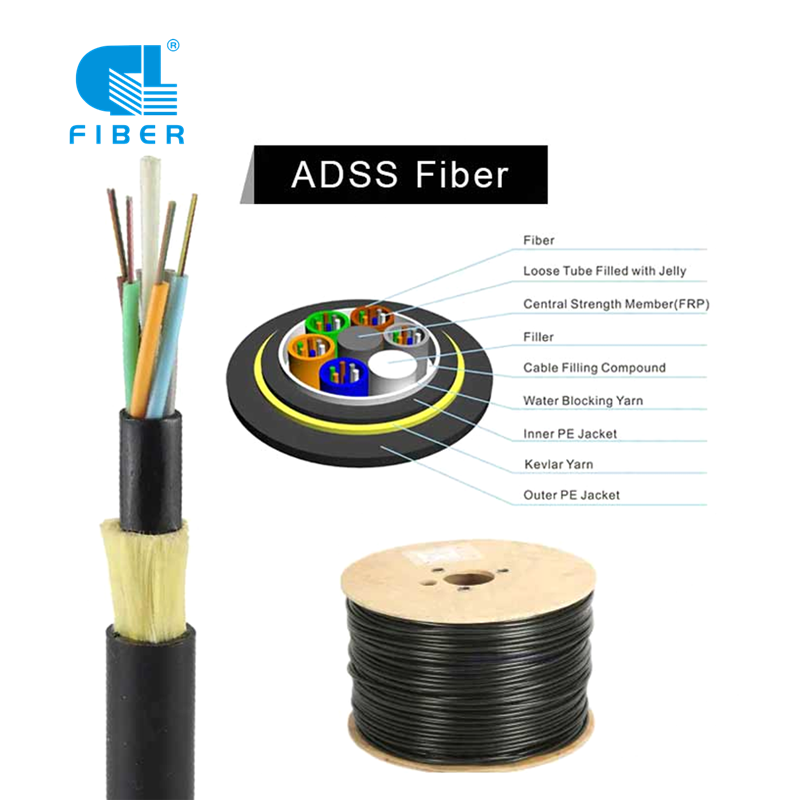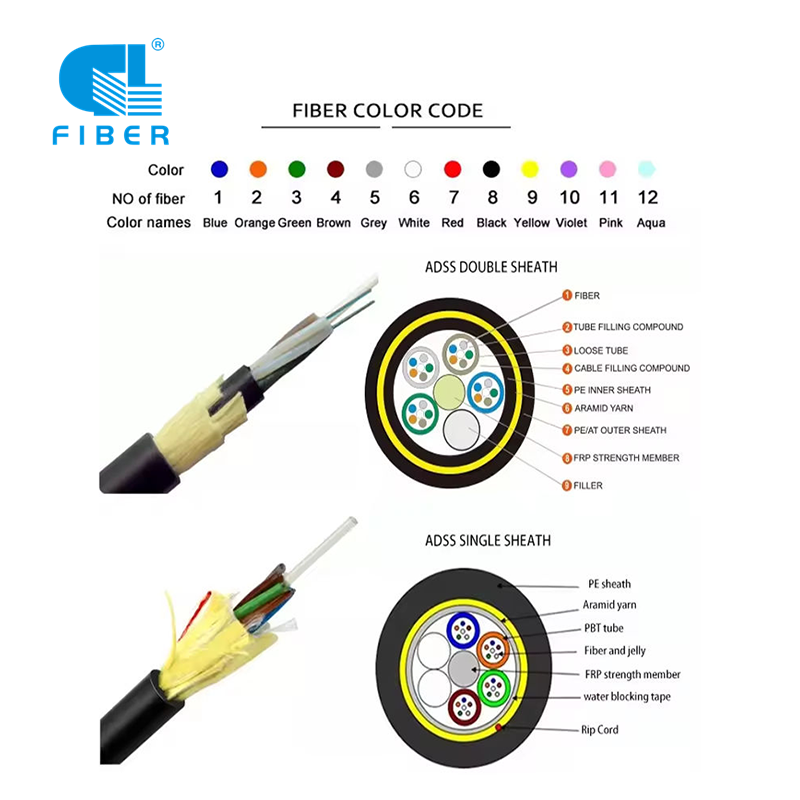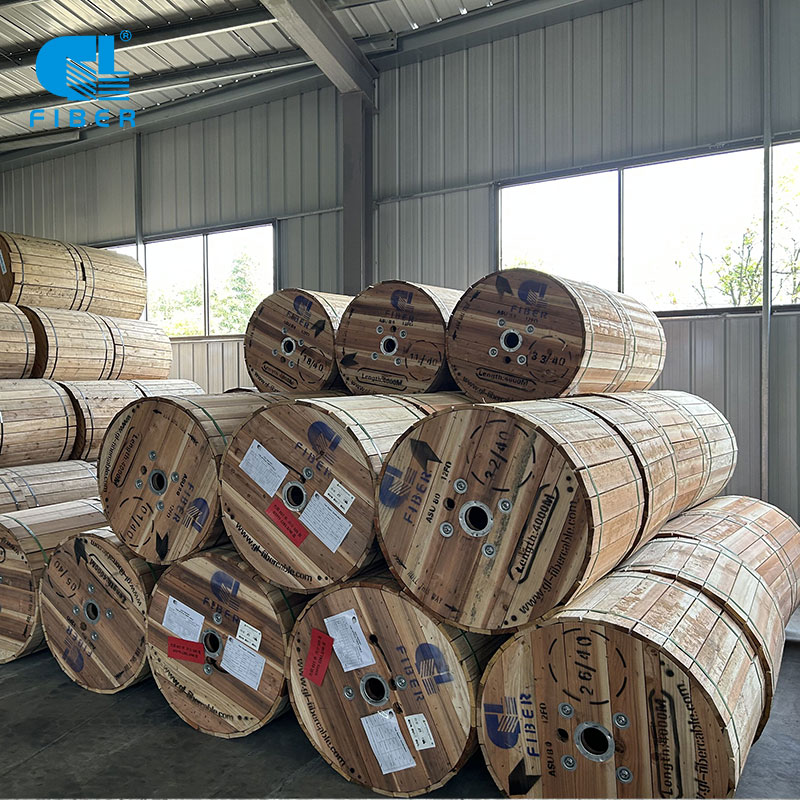ADSS Cable Technology: Powering Modern Connectivity
All-Dielectric Self-Supporting (ADSS) fiber optic cables represent a critical innovation in aerial optical networks. Unlike traditional cables, ADSS requires no metallic components or support wires. Instead, its dielectric design combines high-strength rods with water-blocking materials, enabling direct installation on power transmission towers—even alongside high-voltage lines (up to 110KV). This significantly cuts deployment costs and time, particularly in challenging terrains like mountains, deserts, and remote rural areas.

Global ADSS Market: Current Landscape
The
ADSS cable market is experiencing robust growth, driven by global smart grid investments and rural broadband expansion. Key developments include:
Market Leaders: Prysmian, Fujikura, ZTT, and Corning dominate global supply chains, with Prysmian securing a landmark $38 million contract for Mexico’s national fiber grid (9,800 km OPGW + 5,100 km ADSS).
Technical Segmentation:
Central Tube Design: Ideal for ≤35KV environments, offering flexibility and ease of installation.
Layered Stranding Design: Used in high-voltage zones (66KV–110KV), featuring enhanced mechanical strength.
Pricing Factors: Costs vary by voltage rating (±$0.30–$0.50/meter between 35KV–110KV cables) and customization needs (e.g., anti-electrical corrosion coatings for desert use).
Latin America: Infrastructure Modernization Accelerates Demand
Latin America’s rugged geography and rural connectivity gaps make ADSS a strategic solution:
Mexico’s National Fiber Initiative:
The $38 million REI project targets 5,100 km of
ADSS fiber optic cable to bring broadband to remote regions using existing power infrastructure8.
Local partners like TOTALPLAY (serving 8 million users) rely on high-count ADSS optic cables (e.g., 96-core) for last-mile FTTH networks5.
Andean Highlands (Peru):
Extreme conditions—1,500-meter spans, salt pollution, and 5,000m altitudes—demand specialized ADSS accessories like anti-corrosion dampers.
Chinese manufacturer ZTT’s ADSS cables have been deployed on 220KV lines here, proving resilience in harsh environments1.
Key Driver: Governments prioritize public-private partnerships to fund grid-modernization projects, reducing rural digital divides.
Africa: Energy and Connectivity Converge
Africa’s power-communication integration projects present a $1.5+ billion opportunity for ADSS cable manufacturers:
Zambia’s “Self-Hematopoietic” Model:
ZESCO’s 7,000-km power communication network (using ADSS/OPGW) reduced bandwidth leasing costs and enabled $10M/year revenue from excess capacity sales67.
Submarine Cable Integration:
Google’s Equiano cable (landing in Nigeria) and the EU-backed Medusa system (Europe-North Africa) will require extensive terrestrial aerial optical fiber cable networks.
Nigeria expects Equiano to boost GDP by $10.1 billion by 2025, necessitating nationwide fiber backhauls9.
Trend: Power utilities (e.g., ZESCO’s FibreCom) are becoming licensed bandwidth wholesalers—using ADSS networks to monetize infrastructure.

Emerging Trends Shaping the Future
Smart Grid Integration:
ADSS enables real-time grid monitoring. Example: Mexico’s CFE uses ADSS for both power control and rural broadband3.
Climate-Adaptive Designs:
Manufacturers like GL-Fiber Cable now offer dust/salt-resistant jackets (for deserts) and -40°C–80°C temperature tolerance (for high altitudes).
Cost Efficiency:
Pre-lashed ADSS accessories (clamps, tension sets) reduce installation time by 30% versus legacy systems.
5G Backhaul:
Africa’s 5G rollouts (e.g., MTN in Nigeria) will depend on ADSS for rapid tower connectivity.
Why Partner with GL FIBER's ADSS Cable?
At www.gl-fibercable.com, we engineer ADSS solutions for tomorrow’s networks:
Product Range: From 24-core to 144-core ADSS fiber optic cables, rated for 35KV–110KV, with custom anti-UV/anti-pollution coatings.
Regional Expertise: We provide terrain-specific solutions—like high-span ADSS for Andean grids or lightweight designs for African rural deployments.
End-to-End Support: Cable + ADSS accessories (hardware kits, splicing boxes) + installation guidance.

Conclusion: Seizing the Trillion-Bit Opportunity
The ADSS market will grow at a CAGR of 8–10% through 2030, fueled by Latin America’s rural broadband initiatives and Africa’s grid-digitization projects10. Success requires:
Localized Manufacturing: As Prysmian did in Mexico, we support regional production to cut costs.
Adaptive R&D: Developing cables for extreme climates (deserts/alpine) and higher voltages.
Explore our ADSS solutions at www.gl-fibercable.com—where infrastructure meets innovation.



